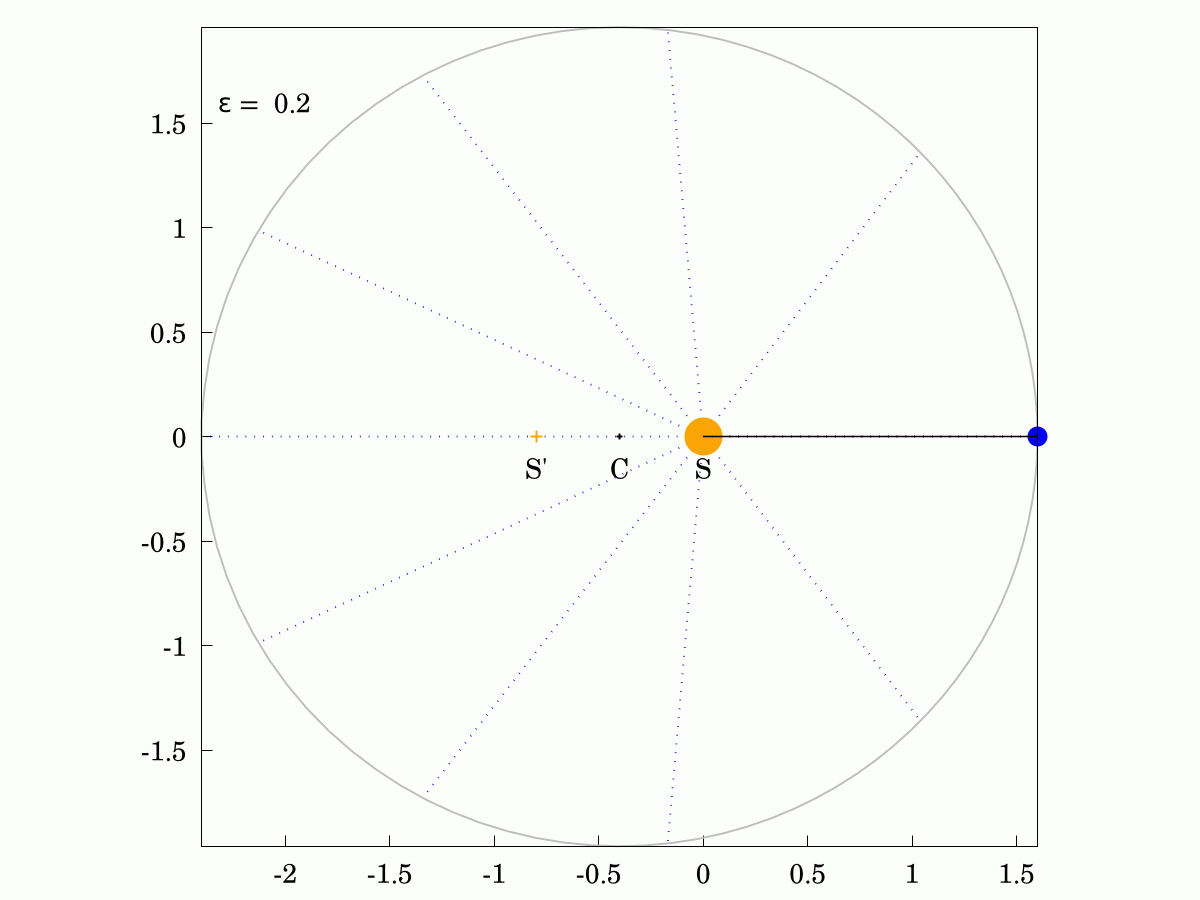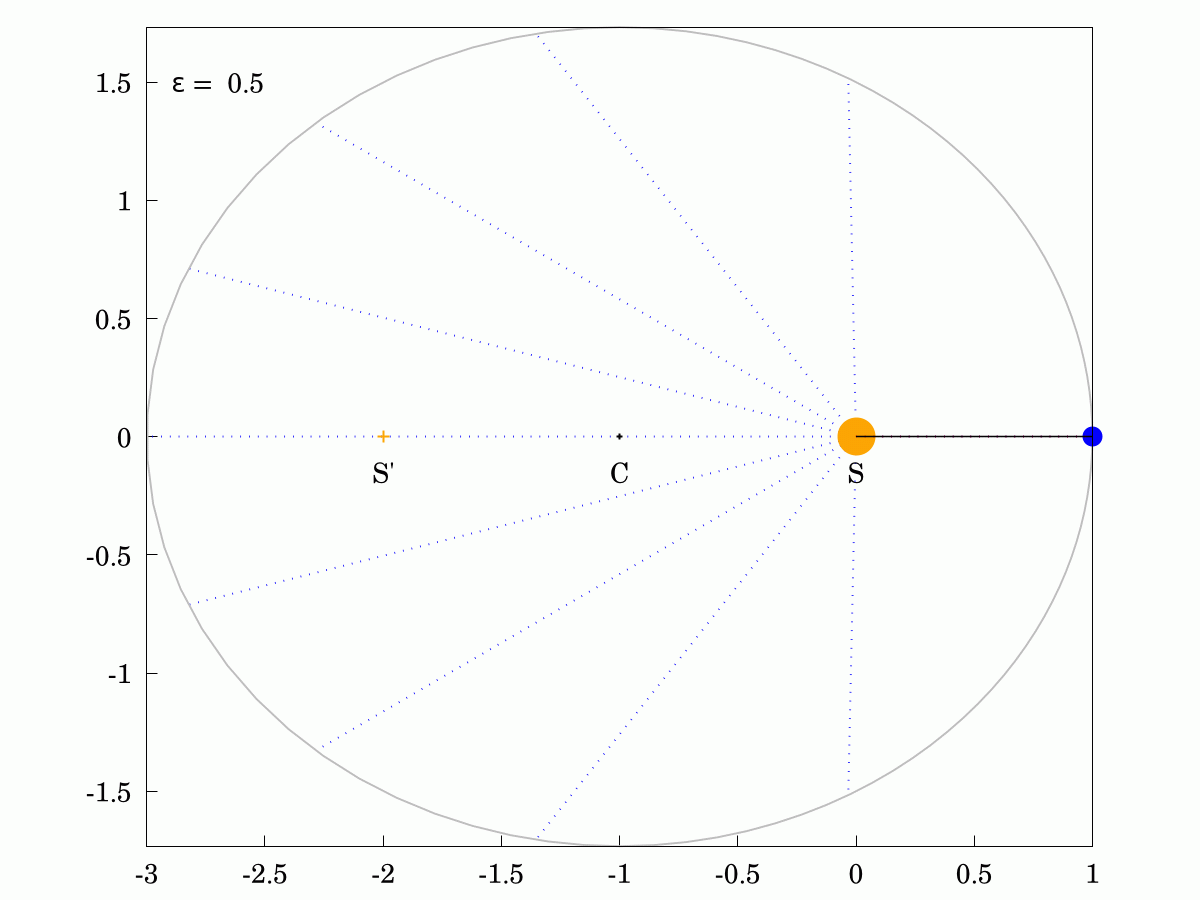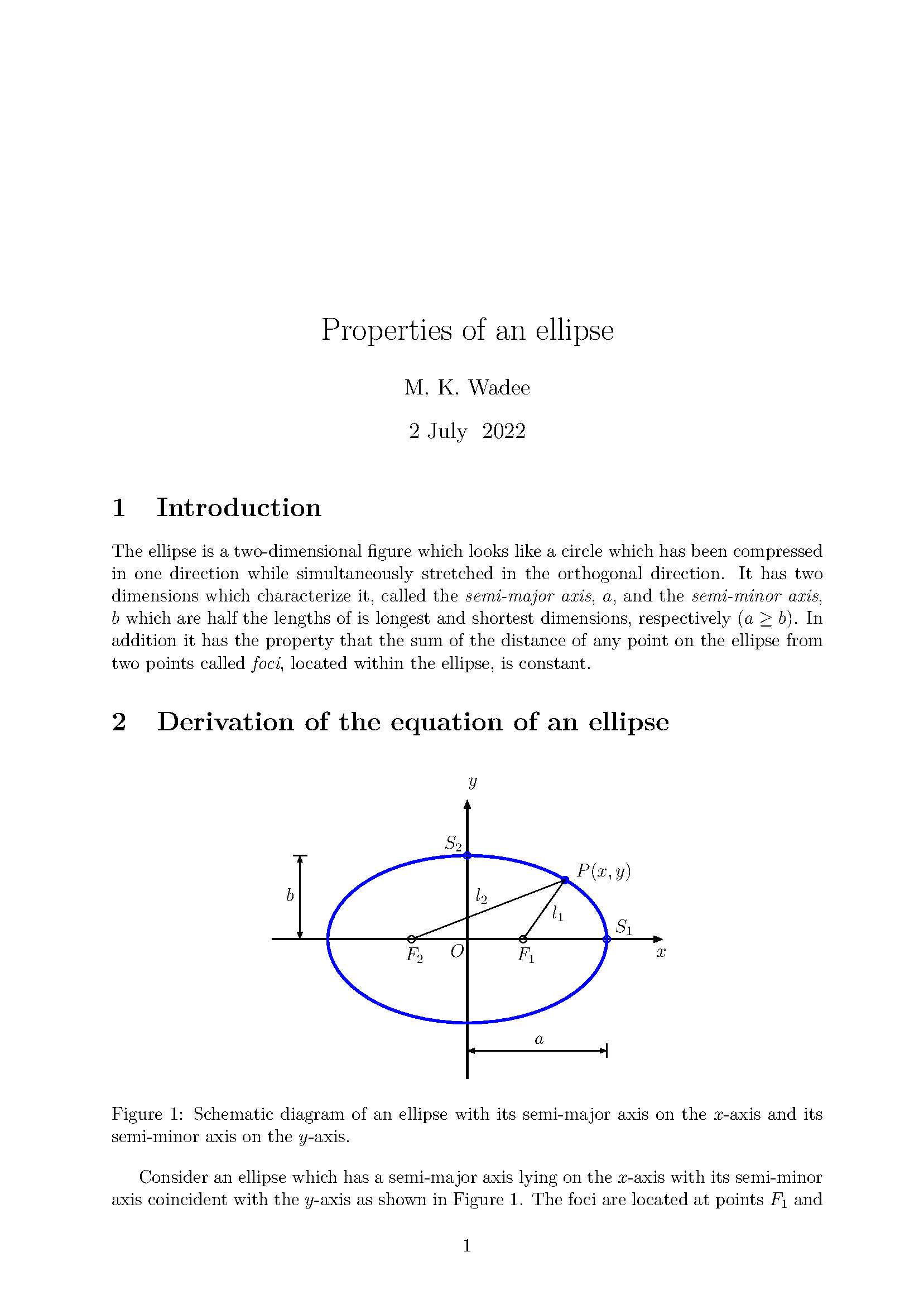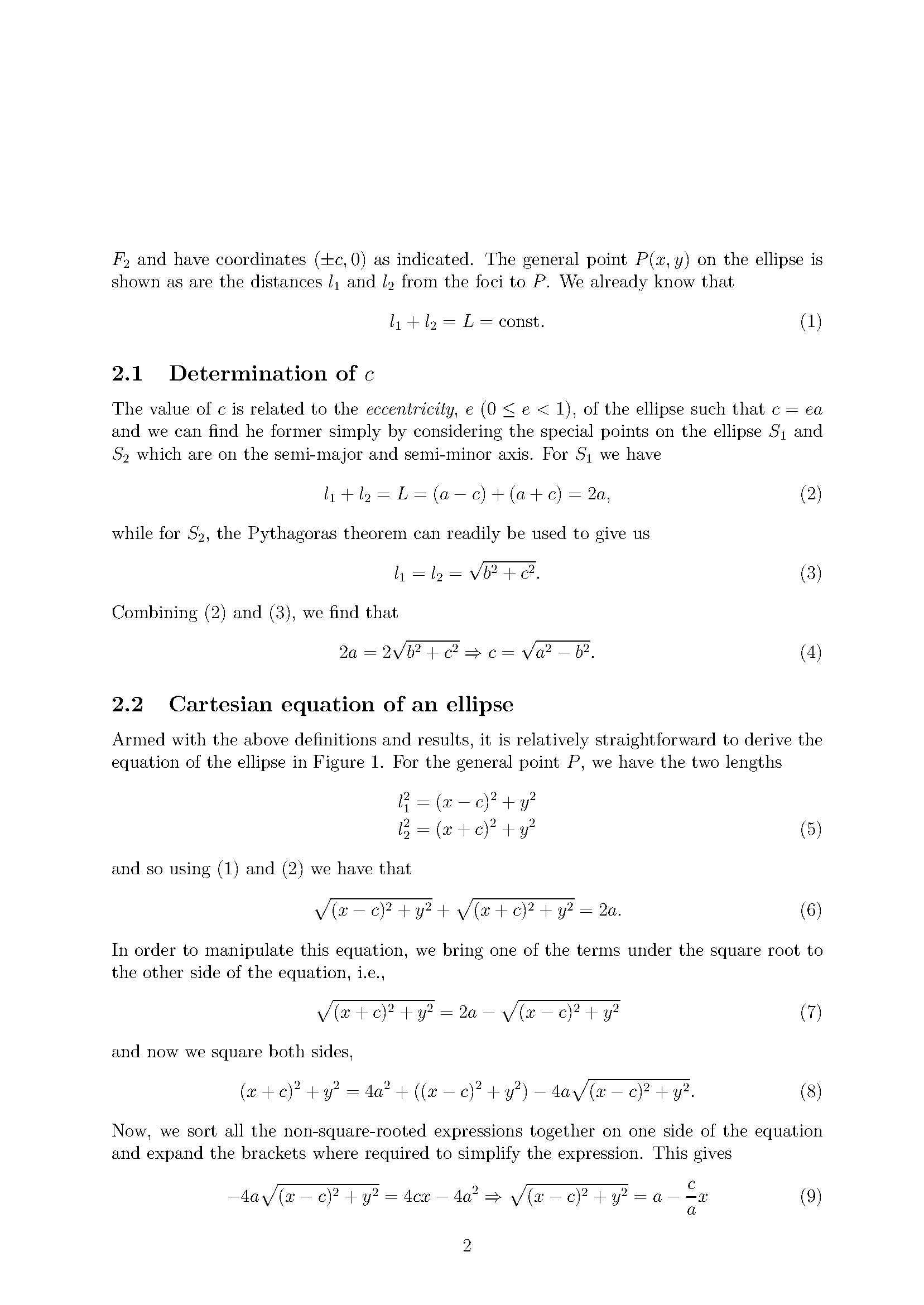#JohannesKeppler was a brilliant #astronomer who studied the motion of #planets. Like everyone, he also had some strange ideas about the heavens, no doubt as a person in the middle ages would about the harmony of worlds and their purported relation to things like the #PlatonicSolids, which was of course bogus. He is probably best known for his famous three laws of #PlanetaryMotion which he reluctantly formulated when he had to abandon the idea that planets only orbit the #Sun in perfect #circles.
His First Law says that planets orbit the Sun in an #ellipse with the Sun at one #focus. Of course, a circle can be thought of as an ellipse where the two #foci have coalesced into one point (zero eccentricity). Here is what the orbit would look like in that case. The angular velocity of the planet is constant in this case and the areas swept out in equal times are identical.

#Keppler's Second Law states that the areas swept out in equal times are always identical, even for eccentric ellipses. Here are two examples and you can show that the areas of all the sectors in each case are identical. The Sun is labelled S, the other focus is labelled S' and the centre of the orbit is labelled C.


The corollary of this law is that the angular velocity of the planet changes over its orbit, being faster when it is closer to the Sun and slower when it is further away. I have shown the constant-velocity position in red and you can see that it lags behind for half the orbit and leads for the other half.
These animations required me to learn the #mathematics of #CelestialMechanics and I had to find out what terms like #MeanAnomaly, #EccentricAnomaly and #TrueAnomaly are. It also requires the #NumericalSolution of one algebraic equation, which was fun to investigate. All the details are on the #Wikipedia page for Kepler's Laws here:
https://en.wikipedia.org/wiki/Kepler%27s_laws_of_planetary_motion
The third law relates the orbital period to the mean distance from the Sun but that is not covered here.
#MyWork #Maxima #WxMaxima #FreeSoftware #Physics #Astronomy #AnimatedGif #Animation





